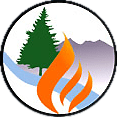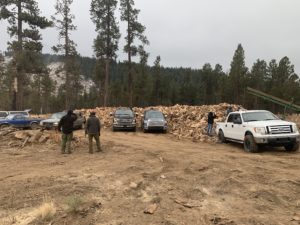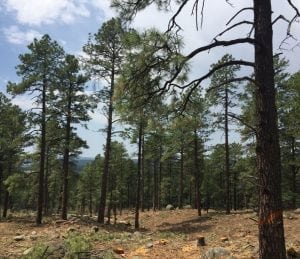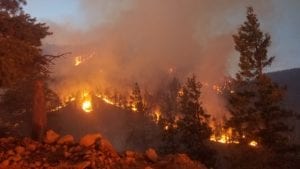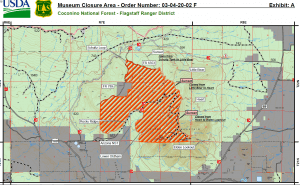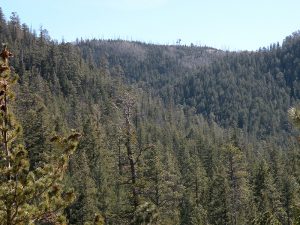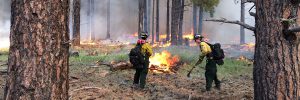Introduction
Since 2015, the U.S. Forest Service Coconino National Forest and U.S. Fish and Wildlife Service (USFWS) are monitoring Mexican spotted owls (MSO) as part of the Flagstaff Watershed Protection Project (FWPP). FWPP is the result of the 2012 passage of a bond measure by the voters of the City of Flagstaff (City) to fund fuels reduction work on National Forest System lands within the Coconino National Forest and Arizona State trust lands. The project involves work in the Rio de Flag watershed, north of Flagstaff, to reduce the risk of post-wildfire flooding into the City as well as work in the Mormon Mountain area to reduce the potential for post-fire sedimentation within the Lake Mary watershed. Project activities will occur over the next five to ten years.
The project proposes to conduct forest management activities (e.g., thinning, burning, etc.) that may affect up to nine designated MSO protected activity centers (PACs). For more information about the MSO and recommended management, please refer to the Recovery plan for the Mexican Spotted Owl (Strix occidentalis lucida), First Revision (USFWS 2012, Recovery Plan). Included in this report are the results of the required 2018 MSO PAC monitoring for the FWPP MSO Management Experiment (USFWS 2015) and recovery habitat (inventory) surveys.
Methods
We used the USFWS 2012 Mexican Spotted Owl Survey Protocol (USFWS 2012, Appendix D).
PAC Monitoring Results
Per the FWPP Management Experiment, we are monitoring 11 PACs: six treatment and five reference in the Dry Lake Hills and Mormon Mountain project areas (Tables 1 & 2). Through the objection resolution process, the Forest Service also agreed to monitor three additional PACs. More information is in the FWPP Biological Opinion (USFWS 2015) and the FWPP Record of Decision (USFS 2015a). Due to the uncertainty of timing of treatments, we may monitor PACs annually until they occur.
2019_MSO_Monitoring_Report_FWPP_FINAL
2020_FWPP_MSO_Monitoring_Report_Final
2021 FWPP MSO Monitoring Report – Final
